Deteriorating brickwork
cement re-pointing
 1stAssociated.co.uk can provide help and advice with regard to building surveys, structural surveys, home buyers reports, independent valuations, property surveys, structural reports, engineers reports, specific defects reports for things such as problems with chimneys, flashings, bricks, mortar, pointing, roofs, insulation, dampness, or any other property matters.
1stAssociated.co.uk can provide help and advice with regard to building surveys, structural surveys, home buyers reports, independent valuations, property surveys, structural reports, engineers reports, specific defects reports for things such as problems with chimneys, flashings, bricks, mortar, pointing, roofs, insulation, dampness, or any other property matters.
As you can see from this article we use photos and sketches in all of our reports and the the feedback we have from our clients is that the sketches and photos help them to really understand the reports.
We, of course, like to meet you at the property during the survey and we are more than happy to talk to you about the reports.
Please free phone 0800 298 5424 for a friendly chat with one of our surveyors.
Cement mortar causing problems
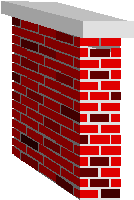
A problem that we are coming across more and more frequently is deteriorating or spalling to the face of bricks. We commonly find this to be to the softer red brick, often found on Georgian and Victorian properties, and predominately pre-First World War properties. The deterioration of the brickwork can look terrible and unfortunately the problem has often compounded by the brickwork that has spalled or deteriorated being repaired with a cement mortar. This then gives, what we can only describe as, a spotted dog look to the property, with the red bricks having lots of cement repairs to the brick.
Lime mortar to cement mortar, the revolution
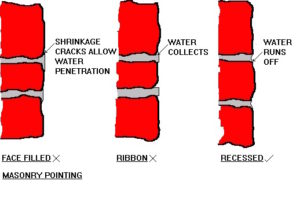
Cement mortar was introduced in the late 1940's (we believe it was 1949). This mortar has completely different properties to lime mortar, being much larger and more brittle. Whilst it works well on modern construction it doesn't work well on older properties, which are meant to breathe.
We always say that a modern property works more like a cagoul, i.e. as a raincoat on the outside, whereas an older property works much more like goretex, which breathes.
What is going wrong? Why are the bricks deteriorating?
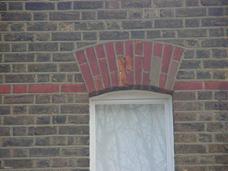

Originally, the bricks would have been built in a lime mortar, usually in what is known as Flemish brick bond or garden wall bond. When it rains the rain gets partly soaked in by the wall and the lime mortar. Then it dissipates and is released from the brickwork and lime mortar. Over the years this can, in some cases, lead to a weathering or wearing of the mortar, which can then give ledges for the rainwater to sit on and cause dampness to come through into the property.
Repairs to lime mortar pointing
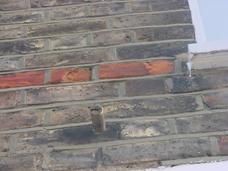
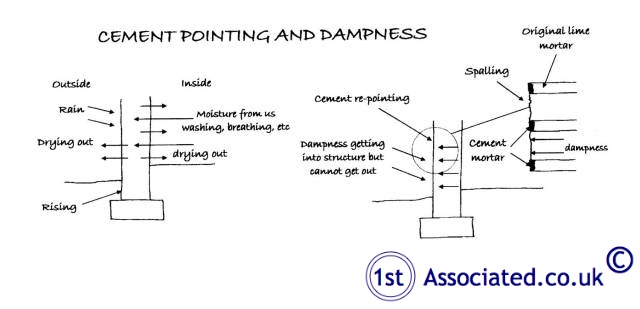 Unfortunately, the repointing that has taken place in many lime mortar walls, and in fact we would go as far as to say the majority of what we see, are in a cement mortar, rather than the original lime mortar. This means that the cement mortar, due to its different constituencies, acts as a plug and stops any rainwater or dampness coming out of the wall. This then leads to the dampness coming out on the surface of the brick, which in turn causes it to spall or deteriorate, as can be seen in the adjoining photo.
Unfortunately, the repointing that has taken place in many lime mortar walls, and in fact we would go as far as to say the majority of what we see, are in a cement mortar, rather than the original lime mortar. This means that the cement mortar, due to its different constituencies, acts as a plug and stops any rainwater or dampness coming out of the wall. This then leads to the dampness coming out on the surface of the brick, which in turn causes it to spall or deteriorate, as can be seen in the adjoining photo.
Free phone 0800 298 5424
Surveying Articles
You may be interested in our other articles about issues with walls including cracking to walls:
Structural Cracking
How, in our experience, Insurance Companies deal with Cracks in Properties
Cracks in my Wall
Wall Tie Problems
Cavity Wall Problems
Repairing Cracks
Structural Reports
Estimating Building Costs
Cracking to my plaster
My property has been repointed in a cement mortar, what can I do?
Please see our section on:
Information on Engineers Reports
Specific Defects Reports
Dampness Articles
If you truly do want an independent expert opinion from a surveyor with regard to structural surveys, building surveys, structural reports, engineers reports, specific defects report, dilapidations, home buyers reports or any other property matters please contact 0800 298 5424 for a surveyor to give you a call back.
If you have a commercial property, be it leasehold or freehold, then you may wish to look at our Dilapidations Website at www.DilapsHelp.com and for Disputes go to our Disputes Help site www.DisputesHelp.com .
We hope you found the article of use and if you have any experiences that you feel should be added to this article that would benefit others, or you feel that some of the information that we have put is wrong then please do not hesitate to contact us (we are only human).
The contents of the website are for general information only and is not intended to be relied upon for specific or general decisions. Appropriate independent professional advice should be paid for before making such a decision.
All rights are reserved the contents of the website are not to be reproduced or transmitted in any form in whole or part without the express written permission of www.1stAssociated.co.uk.